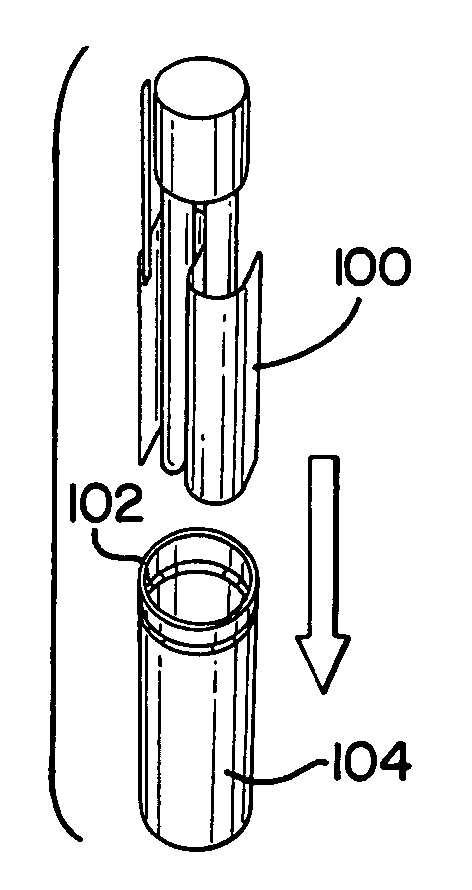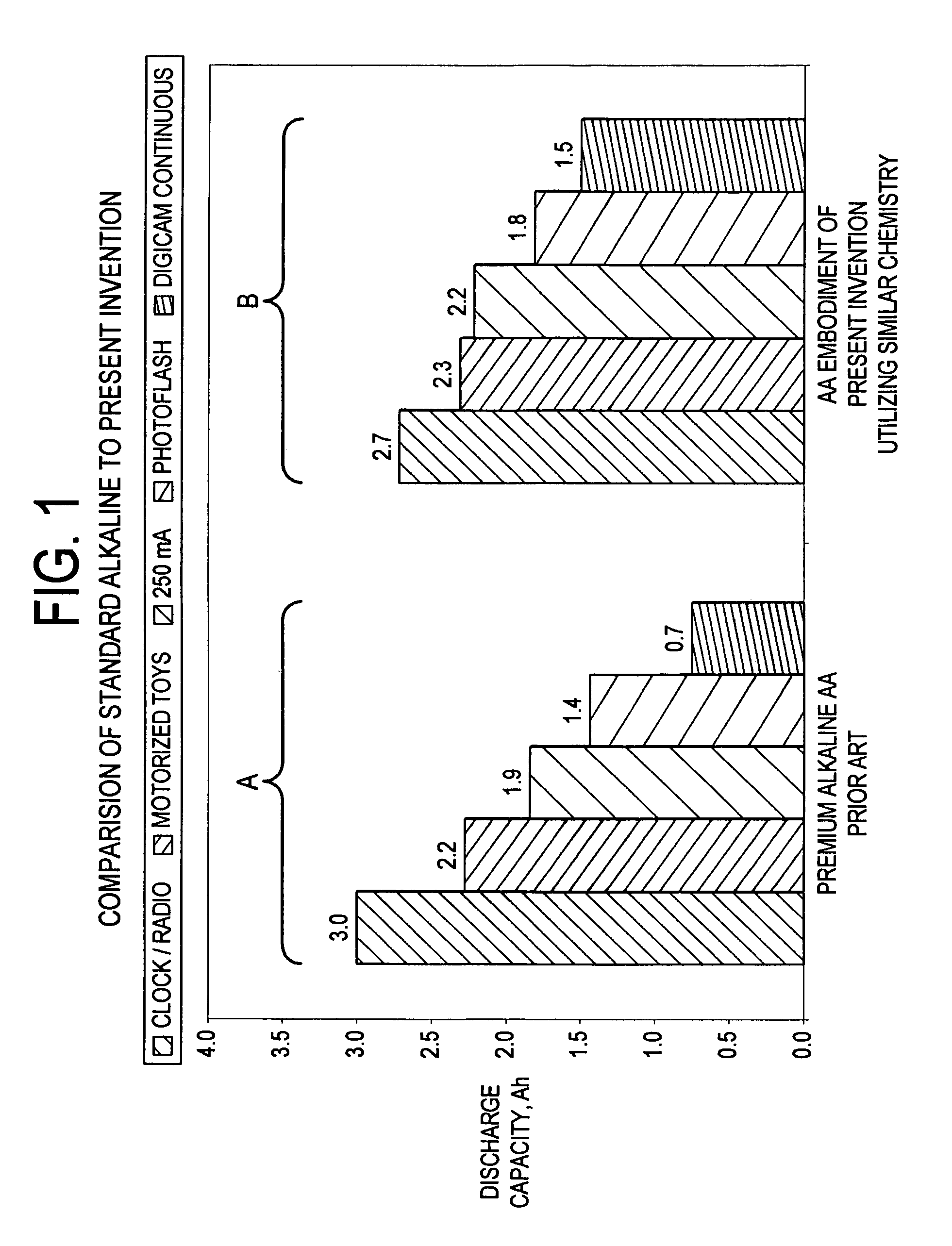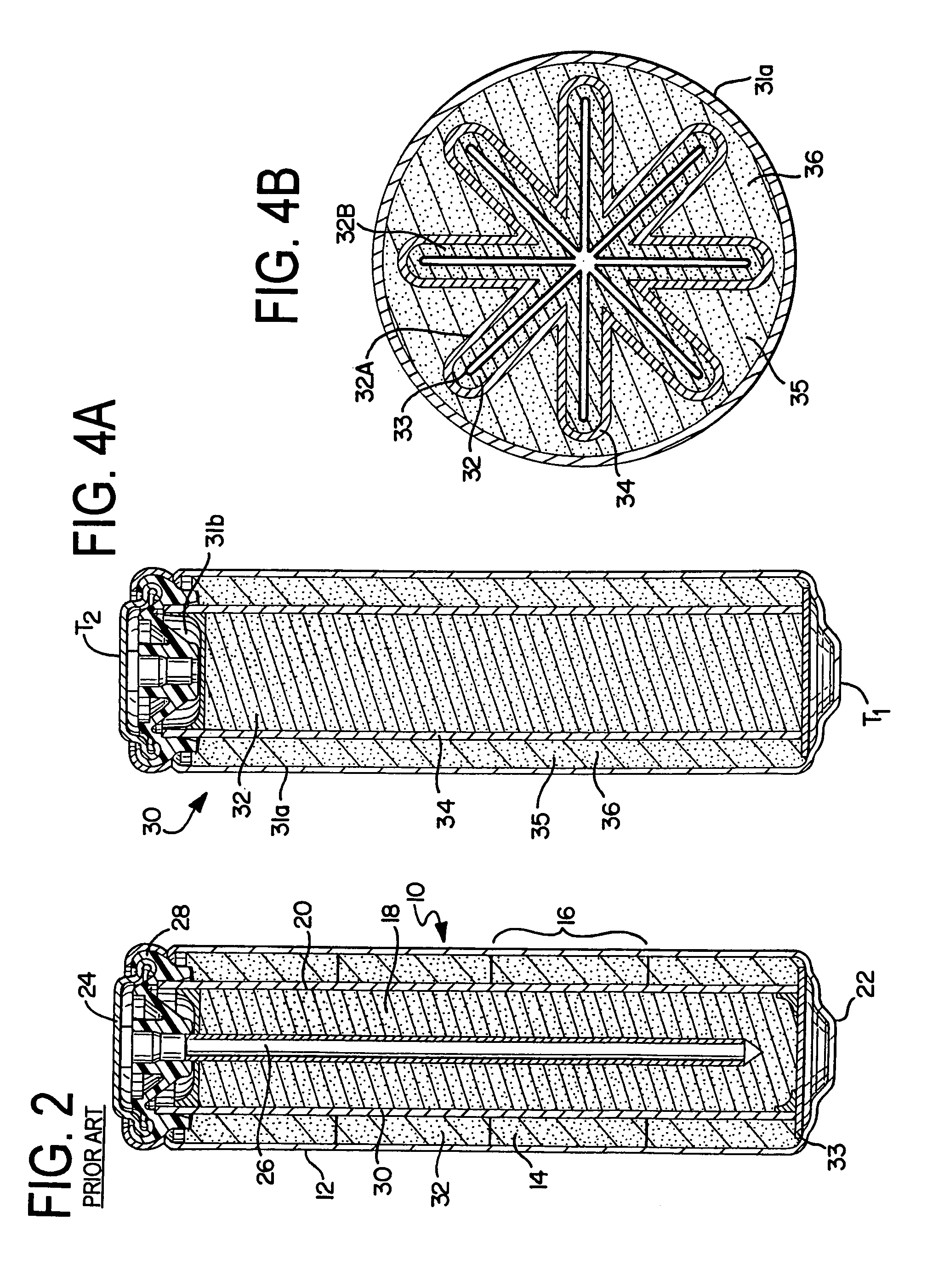Embedded electrode conformations for balanced energy, power, and cost in an alkaline cell
a technology of alkaline cells and conformations, applied in the field of electrochemical battery cells, can solve the problems of inefficiency under high-rate discharge, power consumption of many new devices that require higher continuous or pulse currents, and inability to efficiently deliver stored energy at the higher drain rate, etc., and achieve the effect of ensuring translation and equivalent throughput rates
- Summary
- Abstract
- Description
- Claims
- Application Information
AI Technical Summary
Benefits of technology
Problems solved by technology
Method used
Image
Examples
example 1
[0114]This is an example of the “embedded corrugated-fold” design as shown in FIGS. 5A-5D. In this example, a porous solid electroformed zinc is utilized as the anode. Referring generally to FIGS. 8-11 for all of the examples, a planar electroformed zinc is utilized as an anode sub-assembly 51 of approximately 1.5″ W×1.625″ H. The electroformed zinc anode sub-assembly 51 was formed by pasting a zinc oxide / binder slurry 63 onto a thin metal substrate 64 of silver or copper with an attached insulated lead 62 and then electroforming in an alkaline bath. The anode sub-assembly 51 was then washed and dried, and heat-sealed in a pouch of Scimat 700 / 70 separator 52 to form an anode assembly 55. The anode used was approximately 4.7 g in the dry state and 0.045 inches dry thickness including substrate and lead. The dry anode assembly 55 was soaked in 9 N KOH for at least one hour prior to being folded into a loose corrugated “W” shape 53. Two planar MnO2 cathodes coated onto a perforated met...
example 2
[0115]This example illustrates the “embedded corrugated-fold” design shown in FIGS. 5A-5D, specifically utilizing pasted zinc in an anode sub-assembly. This anode is fabricated from zinc powder using an extrusion or pasting process to form an anode sheet. The anode sub-assembly was prepared by mixing powdered metallic zinc or zinc alloys and zinc oxide together with a Kraton binder and Shellsol solvent. The mixture was pasted onto a 0.002 inches thick perforated copper foil substrate with an attached lead and the solvent was allowed to evaporate. The sub-assembly was then wrapped in an SM700 / 70 separator to form the anode assembly. The dry anode assembly was soaked in 9 N KOH for at least one hour prior to being folded into a loose corrugated “W” shape. Two planar MnO2 cathodes coated onto a perforated metal substrate and with an overlay of 9 N KOH soaked KC16 absorber were placed, such that one was on each side of the anode and folded to conform as intermeshing “W's.” The corrugate...
example 3
[0116]This example illustrates the “embedded corrugated-fold” design shown in FIGS. 5A-5D utilizing zinc gel to form the anode assembly. The zinc gel comprised powdered metallic zinc or zinc alloys and optionally zinc oxide together with a suitable gelling agent such as carboxymethyl cellulose, polyacrylic acid, starches, and their derivatives. An anode current collector with an attached lead was placed in a pouch prepared out of the Scimat SM700 / 79 separator and 7 g of the gel was added into the pouch which was then heat sealed at the bottom to form the anode assembly. Two planar MnO2 cathodes coated onto a perforated metal substrate and with an overlay of 9 N KOH soaked KC16 absorber were placed, such that one was on each side of the anode assembly and folded to conform as intermeshing “W's.” The corrugated stack was pressed and molded into a cylindrical shape in a compression die with a 0.500 inch to 0.515 inch diameter bore prior to insertion into the housing or can. The thickne...
PUM
| Property | Measurement | Unit |
|---|---|---|
| voltage | aaaaa | aaaaa |
| diameter | aaaaa | aaaaa |
| thickness | aaaaa | aaaaa |
Abstract
Description
Claims
Application Information
 Login to View More
Login to View More - R&D
- Intellectual Property
- Life Sciences
- Materials
- Tech Scout
- Unparalleled Data Quality
- Higher Quality Content
- 60% Fewer Hallucinations
Browse by: Latest US Patents, China's latest patents, Technical Efficacy Thesaurus, Application Domain, Technology Topic, Popular Technical Reports.
© 2025 PatSnap. All rights reserved.Legal|Privacy policy|Modern Slavery Act Transparency Statement|Sitemap|About US| Contact US: help@patsnap.com



